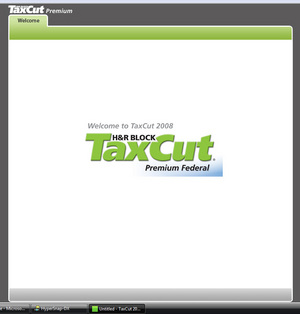1. Introduction
The following document will address what a bond is, who the key players are in the market, types of investments available in the bond market, how the transactions are carried out, and the relation between bond and stock markets.
If a corporation or the government wishes to borrow money, one way to do this is to issue a bond. The company or the government (issuer) borrows money by writing a bond as a type of IOU to the individual or institution (investor) that would be lending the money (Alexander, Sharpe & Bailey, 2001). The bond is a piece of paper that promises the investor they will not only receive the face value back at the end of the loan period (maturity), but they will also receive interest payments (coupon) “which are made at a predetermined rate and schedule” (Investopedia, 2005, n.p.). The interest payments are the incentive for the investor to loan the money to the issuer. In addition, the bond can be sold at, above, or below the face value (the amount the investor would get back) and can either include interest payments or not (zero coupon bonds are sold at a deep discount and then mature to the face value but pay no interest). If an investor bought a bond with a $1,000 face value (par value) for only $800, at maturity they will get $1,000 back (Investopedia, 2005). The bond market simply brings together the investors and the issuers of the bonds and “are mechanisms created to facilitate the exchange of financial assets” (Alexander et al, 2001, p. 8).
2. Analysis of topics
2.1. Key players in the bond market and types of investments available
The key players in the bond market would be the United States Government (federal & local), corporations, individuals (households), and financial institutions such as banks. The U.S. Government issued treasury bonds (T-bonds) until October, 2001 (TreasuryDirect, 2005). Many T-bonds have not been redeemed and are continuing to earn interest. A treasury bond is “a marketable, fixed-interest U.S. Government debt security with a maturity over 10 years” (Investopedia, 2005, n.p.). Treasury bills (T-bills less than 1 year) Treasury notes (T-notes 1-10 years), and savings bonds (I-bonds and EE-bonds) are also currently offered by the government (TreasuryDirect, 2005). T-bills “are (not considered) bonds because of their short maturity” (Investopedia, 2005, n.p.). Investing in treasury securities from the U.S. Government is secure since the risk associated with not being paid back (default) is very small, which is why they are considered risk-free (Investopedia, 2005, n.p.). This does not mean the default risk is non-existent, it simply means that since the government can continually make money through taxes, the chance they would have to default is such that it can be considered non-existent. In addition, treasury securities do have risk associated with interest rates and inflation (if not invested in a Treasury Inflation Protection Security (TIPS)). Interest rate fluctuations and inflation affect the bond’s value since an increase in interest decreases the bond price, and inflation can make the bond’s value lower than when it was purchased (The Bond Market Association, 2005). According to TreasuryDirect (2005), TIPS adjust the principal value twice per year to account for the changes in CPI (Consumer Price Index). Since the amount of risk and the level of return are generally harmonious, the low risk associated with treasury bonds would mean a lower return than other investments (The Bond Market Association, 2005).
Municipal bonds are also an option. Municipal bonds are “issued by a state, municipality (or city), or county” (Investopedia, 2005). They are exempt from federal tax and can be, in many cases, exempt from state and local taxes as well. There is a slightly higher risk as cities can possibly go bankrupt, though this does not happen often.
Corporations can also issue bonds though the risk is higher and the term to maturity can be anywhere from less than five years to over twelve years. A corporation must make a profit in order to not default on the loan, which increases their chance of defaulting on the bond. Corporate bonds have a higher return than government and municipal bonds due to the increased risk. Before investing in corporate bonds, it would be important to review their credit rating published by agencies such as Moddy’s, Standard and Poor’s and Fitch. Investing in bonds from a corporation with too low of a rating could be riskier than investing in stocks and are often called junk bonds (Investopedia, 2005).
As discussed previously, zero coupon bonds also exist. These include no interest payments (zero coupon). In place of interest, the bond is sold at a discount such as a $1,000 face value bond being sold for $800. At maturity, the investor would receive the full $1,000, $200 more than what was paid.
2.2. How transactions for bonds are carried out
One can purchase bonds from a broker or financial institutions such as banks. An investor can purchase Treasury securities directly from the U.S. Treasury as well through TreasuryDirect (Investopedia, 2005). Often times, purchasing can be done on the phone, in person, or even over the internet and in auctions. When purchasing bonds, the investor must indicate specifics. Specifics may include the type or name of the bond, face value, acceptable yield (return) if needed, and the price if buying in the secondary market or if the discount from the face value is not set.
2.3. The relation between bond markets and stock markets
Stocks and bonds’ purpose is for the issuer to borrow money and the investor to receive something in return for lending that money. When investing in stocks, the investor owns part of the company and has equity. Bonds are loans to the issuer in which the lender receives interest or an increase in the principal they will eventually receive when it matures. The stock market is volatile in that it reacts quickly and to a large degree to changes (Investopedia, 2005). Risk in stocks is much higher as are the potential returns. Stocks do not guarantee dividends and an investor can lose all of their investment. However, the two markets go hand-in-hand as many people will balance their portfolios by using more of one than the other depending on their financial objectives. For someone who is older, and cannot afford as much risk, they would invest more in bonds than they would in stocks. A parent trying to save for their children’s education would invest in government savings bonds as the interest can be exempt from federal tax if used for education (TreasuryDirect, 2005). A young businessperson would likely invest more in stocks than bonds as they have time to make up their loss if the stock drops.
3. Conclusion
Bonds provide a way for the government and corporations to obtain money other than through bank loans. Bonds can be a safe way to invest with at least some level of certainty. Certain bonds can be sold to other investors before maturity, which is why a bond’s price can fluctuate so drastically and how one could earn a higher or lower yield than if they held it to maturity (Investopedia, 2005). Types of bonds include government bonds, municipal bonds, corporate bonds, and zero coupon bonds. Risk and return have a positive correlation in that a higher risk means a potential for a higher return. Finally, bonds are a good way to balance a portfolio to offset some of the risk involved with investing in stocks.
References
Alexander, G. J., Sharpe, W. F., Bailey, J. V. (2001). Fundamentals of investments. 3rd ed. Upper Saddle River, NJ: Prentice Hall.
The Bond Market Association. (2005).InvestingInBonds.com: About Government Bonds. Retrieved on May 5, 2005 from http://www.investinginbonds.com.
Investopedia.com. (2005).Bond basics tutorial. Retrieved on May 5, 2005 from http://www.investopedia.com/university/bonds/.
TreasuryDirect: U.S. Department of the Treasury, Bureau of the Public Debt. (2005). Treasury products. Retrieved on May 6, 2005 from http://www.treasurydirect.gov/indiv/products/products.htm.



